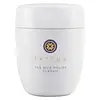What's inside
What's inside
 Key Ingredients
Key Ingredients

 Benefits
Benefits

 Concerns
Concerns

 Ingredients Side-by-side
Ingredients Side-by-side

Water
Skin ConditioningGlycerin
HumectantSodium Cocoyl Isethionate
CleansingCocamidopropyl Betaine
CleansingHydrogenated Castor Oil
EmollientNiacinamide
SmoothingAcrylates Crosspolymer-4
Emulsion StabilisingCoco-Glucoside
CleansingDisodium Cocoyl Glutamate
CleansingXanthan Gum
EmulsifyingSaccharomyces/Rice Ferment Filtrate
Skin ConditioningCocos Nucifera Fruit Extract
EmollientLactobacillus/Pumpkin Fruit Ferment Filtrate
Skin ConditioningPunica Granatum Extract
AstringentAloe Barbadensis Leaf Juice
Skin ConditioningSodium Hyaluronate
HumectantGlyceryl Laurate
EmollientGlyceryl Undecylenate
EmollientPanthenol
Skin ConditioningPyrus Malus Fruit Extract
Skin ConditioningSqualane
EmollientHydroxyethylcellulose
Emulsion StabilisingChlorella Vulgaris Extract
Skin ConditioningCamellia Oleifera Leaf Extract
AstringentCaprylyl Glycol
EmollientJojoba Esters
EmollientOryza Sativa Germ Powder
AbrasiveLactic Acid
BufferingButylene Glycol
HumectantPentylene Glycol
Skin ConditioningSodium Chloride
MaskingPropanediol
SolventPhenoxyethanol
PreservativeCitric Acid
BufferingLeuconostoc/Radish Root Ferment Filtrate
AntimicrobialTocopherol
AntioxidantEthylhexylglycerin
Skin ConditioningWater, Glycerin, Sodium Cocoyl Isethionate, Cocamidopropyl Betaine, Hydrogenated Castor Oil, Niacinamide, Acrylates Crosspolymer-4, Coco-Glucoside, Disodium Cocoyl Glutamate, Xanthan Gum, Saccharomyces/Rice Ferment Filtrate, Cocos Nucifera Fruit Extract, Lactobacillus/Pumpkin Fruit Ferment Filtrate, Punica Granatum Extract, Aloe Barbadensis Leaf Juice, Sodium Hyaluronate, Glyceryl Laurate, Glyceryl Undecylenate, Panthenol, Pyrus Malus Fruit Extract, Squalane, Hydroxyethylcellulose, Chlorella Vulgaris Extract, Camellia Oleifera Leaf Extract, Caprylyl Glycol, Jojoba Esters, Oryza Sativa Germ Powder, Lactic Acid, Butylene Glycol, Pentylene Glycol, Sodium Chloride, Propanediol, Phenoxyethanol, Citric Acid, Leuconostoc/Radish Root Ferment Filtrate, Tocopherol, Ethylhexylglycerin
Microcrystalline Cellulose
AbsorbentOryza Sativa Powder
Sodium Lauryl Phosphate
EmulsifyingSodium Lauroyl Glutamate
Sodium Stearoyl Glutamate
CleansingWater
Skin ConditioningSodium Cocoyl Glutamate
CleansingLauryl Betaine
CleansingSodium Lauroyl Methylaminopropionate
CleansingSaccharomyces/Rice Ferment Filtrate
Skin ConditioningCamellia Sinensis Leaf Extract
AntimicrobialCladosiphon Okamuranus Extract
Skin ConditioningPapain
Skin ConditioningOryza Sativa Bran Extract
Skin ConditioningSericin
Skin ConditioningHydrolyzed Silk
HumectantHydrolyzed Conchiolin Protein
Skin ConditioningPropanediol
SolventDextrin
AbsorbentPhytosteryl/Octyldodecyl Lauroyl Glutamate
Skin ConditioningEthylhexylglycerin
Skin ConditioningTocopherol
AntioxidantButylene Glycol
HumectantAlcohol
AntimicrobialPhenoxyethanol
PreservativeMicrocrystalline Cellulose, Oryza Sativa Powder, Sodium Lauryl Phosphate, Sodium Lauroyl Glutamate, Sodium Stearoyl Glutamate, Water, Sodium Cocoyl Glutamate, Lauryl Betaine, Sodium Lauroyl Methylaminopropionate, Saccharomyces/Rice Ferment Filtrate, Camellia Sinensis Leaf Extract, Cladosiphon Okamuranus Extract, Papain, Oryza Sativa Bran Extract, Sericin, Hydrolyzed Silk, Hydrolyzed Conchiolin Protein, Propanediol, Dextrin, Phytosteryl/Octyldodecyl Lauroyl Glutamate, Ethylhexylglycerin, Tocopherol, Butylene Glycol, Alcohol, Phenoxyethanol
 Reviews
Reviews

Alternatives
Ingredients Explained
These ingredients are found in both products.
Ingredients higher up in an ingredient list are typically present in a larger amount.
Butylene Glycol (or BG) is used within cosmetic products for a few different reasons:
Overall, Butylene Glycol is a safe and well-rounded ingredient that works well with other ingredients.
Though this ingredient works well with most skin types, some people with sensitive skin may experience a reaction such as allergic rashes, closed comedones, or itchiness.
Learn more about Butylene GlycolEthylhexylglycerin (we can't pronounce this either) is commonly used as a preservative and skin softener. It is derived from glyceryl.
You might see Ethylhexylglycerin often paired with other preservatives such as phenoxyethanol. Ethylhexylglycerin has been found to increase the effectiveness of these other preservatives.
Phenoxyethanol is a preservative that has germicide, antimicrobial, and aromatic properties. Studies show that phenoxyethanol can prevent microbial growth. By itself, it has a scent that is similar to that of a rose.
It's often used in formulations along with Caprylyl Glycol to preserve the shelf life of products.
Propanediol is an all-star ingredient. It softens, hydrates, and smooths the skin.
It’s often used to:
Propanediol is not likely to cause sensitivity and considered safe to use. It is derived from corn or petroleum with a clear color and no scent.
Learn more about PropanediolThis ingredient is created by fermenting the bacteria, Saccharomyces, and rice.
Saccharomyces is rich in beta-glucan and has great hydrating properties.
Rice ferment also has great skin benefits - read more about them here.
Learn more about Saccharomyces/Rice Ferment FiltrateTocopherol (also known as Vitamin E) is a common antioxidant used to help protect the skin from free-radicals and strengthen the skin barrier. It's also fat soluble - this means our skin is great at absorbing it.
Vitamin E also helps keep your natural skin lipids healthy. Your lipid skin barrier naturally consists of lipids, ceramides, and fatty acids. Vitamin E offers extra protection for your skin’s lipid barrier, keeping your skin healthy and nourished.
Another benefit is a bit of UV protection. Vitamin E helps reduce the damage caused by UVB rays. (It should not replace your sunscreen). Combining it with Vitamin C can decrease sunburned cells and hyperpigmentation after UV exposure.
You might have noticed Vitamin E + C often paired together. This is because it is great at stabilizing Vitamin C. Using the two together helps increase the effectiveness of both ingredients.
There are often claims that Vitamin E can reduce/prevent scarring, but these claims haven't been confirmed by scientific research.
Learn more about TocopherolWater. It's the most common cosmetic ingredient of all. You'll usually see it at the top of ingredient lists, meaning that it makes up the largest part of the product.
So why is it so popular? Water most often acts as a solvent - this means that it helps dissolve other ingredients into the formulation.
You'll also recognize water as that liquid we all need to stay alive. If you see this, drink a glass of water. Stay hydrated!
Learn more about Water